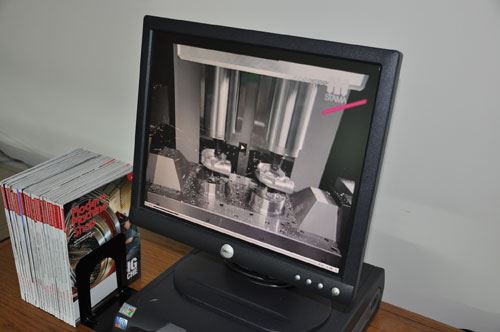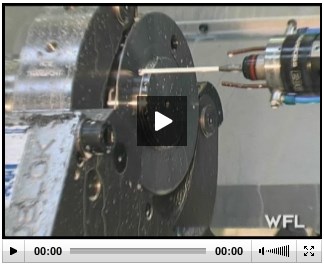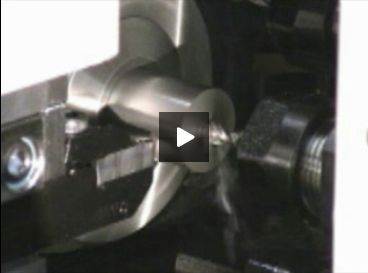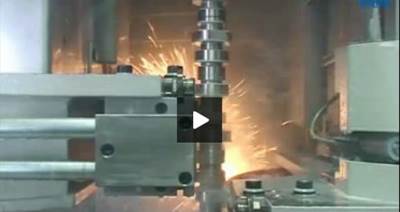Automotive Machining in Motion
A number of videos showing innovative ways to manufacture automotive components has recently been added to MMS Online. Read about the technologies here and then click to see them in action.
Share




In the course of developing articles for Modern Machine Shop, we sometimes supplement what’s in print with online video, some of which we shoot ourselves and some of which is provided to us. This is happening with more regularity. Sometimes, though, the process works in reverse. We may start with a solid bit of video and then write an article for the magazine about the technology that’s depicted. This is the case with the automotive-related machining videos mentioned in this short article. These were recently added to our website to coincide with the launch of our new Automotive Machining Zone, which features content focused on machining technologies applied in the production of automotive components.
After you read about each of the following auto-related machining applications, go to our website to see the videos mentioned. You can access them by visiting mmsonline.com/automotive and clicking on “All Content.”
Turn-Mill Probes for Accurate Camshaft Machining
Part probing isn’t performed on turn-mills as often as it is on conventional machine tools. There are clear advantages for in-process probing on multitasking machines, though. A good example is machining of large diesel engine camshaft sections on a turn-mill machine. After machining, the sections are assembled together to form a completed camshaft.
Each segment has holes positioned around a bolt circle to accept assembly bolts. The bolt circle (thus the centerline of each bolt hole) must align with the actual centerline of the camshaft segment for proper alignment during assembly. WFL Millturn Technologies (Novi, Michigan) has developed a canned probing cycle for its turn-mills that automatically finds the centerline of the segment as well as the true centers of the bolt holes, all of which have been pre-drilled undersize. If a bolt hole’s centerline position is not where it needs to be relative to the part centerline, then offsets are made to position the tool to the correct location before drilling to final size. This video demonstrates this probing routine.
Swiss-Types for Short Parts
Swiss-type lathes use a sliding headstock with a guide bushing that supports barstock very close to the point of contact for an OD cutting tool. This feature makes them very effective for turning very long workpieces.
However, the capability to perform multiple operations, including backworking, makes these machines attractive for complex, shorter parts, too. Plus, a Swiss-type’s inherent stability enables aggressive cuts without sacrificing tool life or precision. This is evident in video of a Tsugami BS26C Swiss-type (available from REM Sales in Windsor, Connecticut) machining an intricate airbag component complete from barstock. Operations performed include turning, boring, drilling, grooving and knurling. The BS26C in this video features driven tool positions for both its main and sub spindles. Transferring the part to the sub-spindle for backworking operations allows for complete production of this tricky component.
Going Vertical with Camshaft Grinding
Emag (Farmington Hills, Michigan) is applying the vertical grinding concept in a new way for long workpieces such as automotive camshafts. The concept uses dual, opposing grinding wheels that engage a workpiece simultaneously. The prime advantage is that the axial forces created by the wheels are directed toward each other, so they are canceled.
Video of the company’s VTC 315DS machine grinding a camshaft shows the two grinding spindles moving in the X and Z axes on independent, compound slides as they complete camshaft lobes. Located vertically between the machine’s two spindles, the camshaft is secured from below by a fixed tailstock center and from above by a moveable workhead center. This provides the grinding wheels with ample access to the workpiece to enable simultaneous grinding from both the left and the right sides.
Related Content
Sunnen Products Company Partners With Hendrick Motorsports
The partnership puts the new Sunnen SV-series honing machine in the Hendrick Motorsports engine operation alongside other Sunnen honing and engine building machines.
Read MoreFaster Programming and Training Helps Automotive Shop Thrive
Features that save on training, programming and cycle times have enabled Speedway Motors to rapidly grow and mature its manufacturing arm.
Read MoreSchwanog Custom Form Tools Reduce Cycle Times
IMTS 2024: Schwanog’s insertable form tool system supports the manufacture of precision parts for industries such as medical, automotive, aerospace and others.
Read MoreDN Solutions Responds to Labor Shortages, Reshoring, the Automotive Industry and More
At its first in-person DIMF since 2019, DN Solutions showcased a range of new technologies, from automation to machine tools to software. President WJ Kim explains how these products are responses to changes within the company and the manufacturing industry as a whole.
Read MoreRead Next
Video: Swiss Machining of Airbag Component
The capability to perform multiple operations, including backworking, makes these machines attractive for complex, short parts like this airbag component.
Read MoreVideo: Dual-Wheel, Vertical Grinding of a Camshaft
In this video, one of EMAG's VTC machines grinds a camshaft using two opposing grinding wheels. Opposing the wheels in such a way cancels axial forces on the camshaft.
Read MoreVideo: Turn-Mill Probes for Accurate Camshaft Machining
Feature-to-feature accuracy for diesel camshaft segments is possible thanks to in-process probing.
Read More




























.jpg;maxWidth=300;quality=90)







